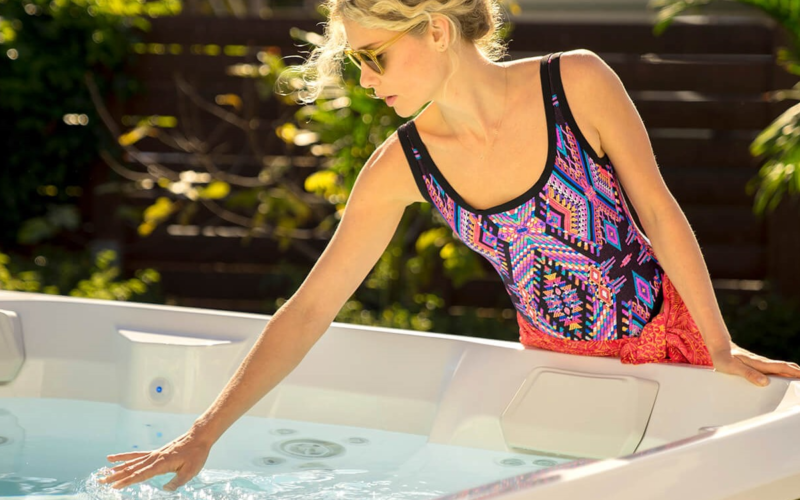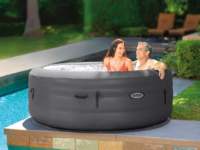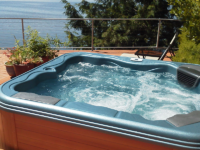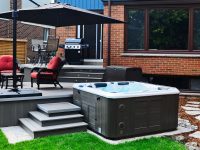Many people know hot tubs as a place where it is possible to achieve maximum relaxation of body and soul. But not everyone knows how hot the spa should be to bring the body only positive effects and not harm the health. In this article, we have collected all the necessary information about safe water temperature for different people categories. After reading it, you will no longer have to worry about the water being too hot or if you’ve been in a hot bath for a long time.
How hot is a hot tub supposed to be
Hot tub bathing is primarily a medical procedure, so hypertensive people, pregnant women, and seniors are indicated with several restrictions (consult with your doctor). In addition, children and people with disabilities should use it only under supervision.
When a hot tub is used correctly, hydromassage treatment is beneficial to health. The main benefit of a hot tub is the positive, relaxing effect. Massage with water jets and air bubbles relieves muscle tension and gives proper rest to the whole body. Let’s dive deeper into the norms for different people categories.
For adults
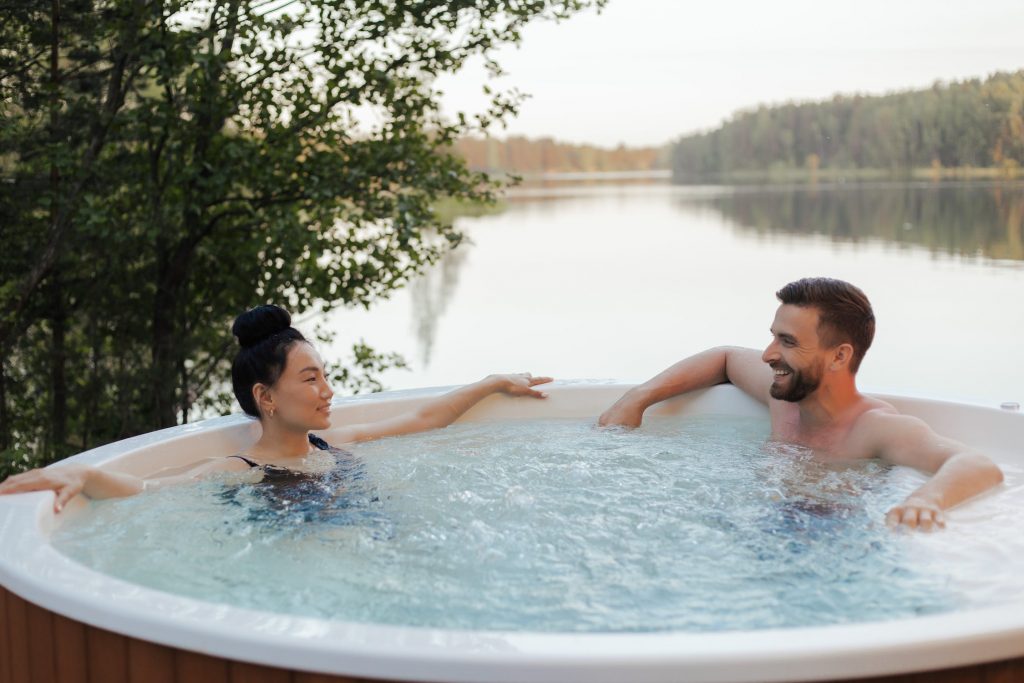
The U.S. Consumer Product Safety Commission (CPSC) [1] warns that the water in the hot tub should be less than 104°F (40°C) to avoid causing hypothermia. Typically, in modern spas, 104 degrees is the maximum temperature that can be set.
The safest temperature is the 93°F (34°C) to 100°F (37.7°C) degree range. However, starting with a lower temperature is recommended, and as the body gets used to the heat, gradually increase it. Below is a table of hydromassage duration depending on the water temperature.
Table of temperature/duration of hydromassage:
| Temperature range | Hot tubbing time |
| 93°F (34°C) – 97°F (36°C) | 20 minutes |
| 97°F (36°C) – 100°F (37.7°C) | 15 minutes |
| 100°F (37.7°C) – 104°F (40°C) | 10 minutes |
For children
Children are more sensitive to heat than adults, so you must adhere to a safe temperature for them.
According to the American Academy of Pediatrics [2], children should not be in a hot tub until they are five years old. It is because their skin is sensitive and more susceptible to heat. And it is also associated with a high risk of drowning.
From age 5, the child can be taken in a hot tub for 15 minutes at a temperature of 98°F (36.6°C) to 102°F (39°C). If the water temperature is 104 degrees, your child should be in it for no more than 5 minutes. It is also recommended not to immerse children up to their neck but put them in an elevated position so that their body cools down.
During the hot tubbing time, give children more water to drink or offer fruit to replenish their water balance.
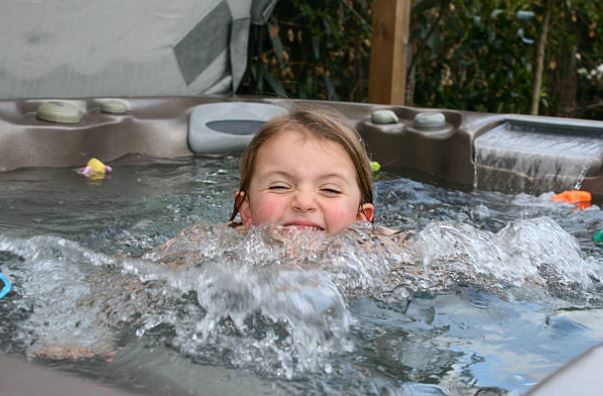
For pregnant women
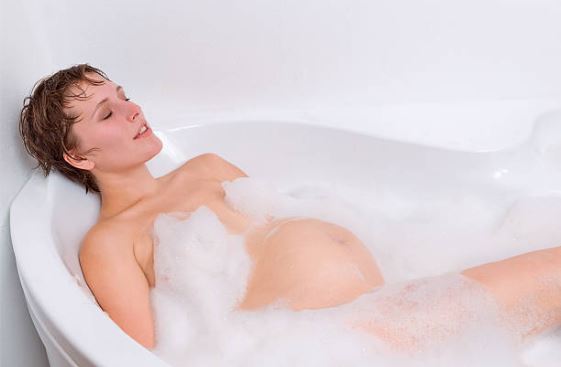
Hot tub treatments have different effects on a woman’s body at various stages of pregnancy. The Organization of Teratology Information Specialists (OTIS) [3] states that prolonged exposure to high temperatures (more than 10 minutes) in the first seven weeks of pregnancy puts the fetus at a higher risk of developing neural tube defects. Therefore, during the first trimester, it is better not to risk your child’s health and refrain from taking a hot tub.
The first trimester, as a rule, is characterized mainly by nausea and morning sickness. But in the second and third trimesters, the physical (and sometimes emotional) discomfort begins. At this time, future mothers especially often want to plunge in hot water under the soothing jets of the hot tub. The doctor’s recommendations at this stage are the same: you should be careful.
According to the OTIS, a body temperature of 101º F (38.3°C) is critical for the expectant mother and fetus, especially if it lasts for a prolonged period. Other sources, such as the American College of Obstetricians and Gynecologists [4] state that pregnant women should ensure their body temperature does not rise above 102.2ºF (39°C).
For seniors
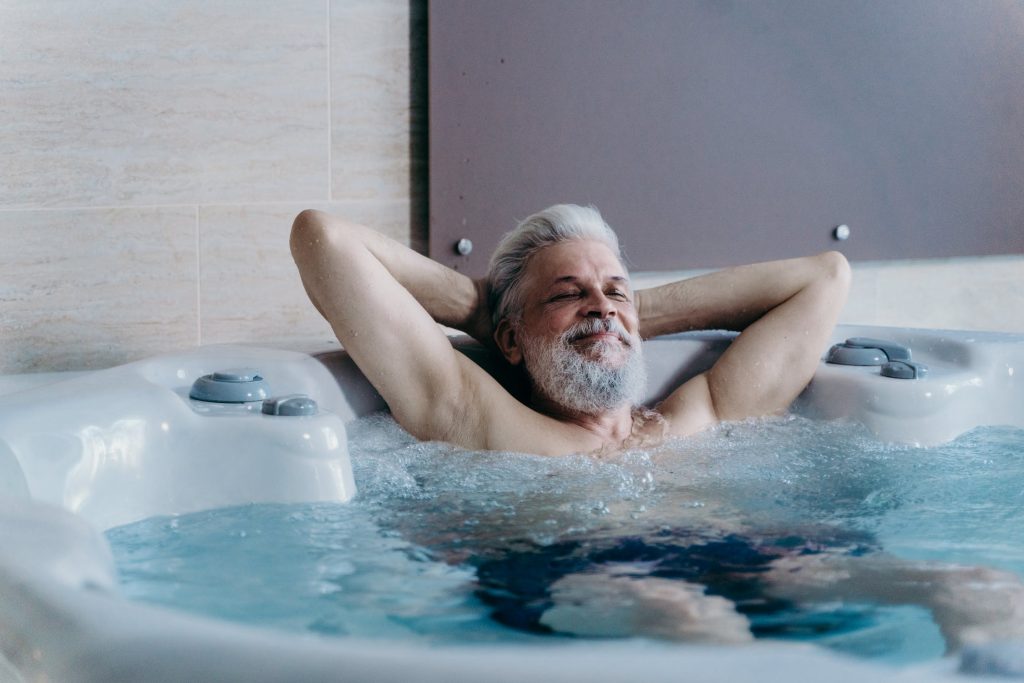
For all seniors, it is necessary to consult a doctor before taking a hot tub because everyone has an individual health condition. However, for most older people, a safe temperature of 93ºF (34°C) to 100ºF (38°C) is appropriate.
But note that hot tubs can be dangerous for older people with high or low blood pressure, diabetes, or heart disease. Seniors with chronic lung diseases or who take certain medications should also avoid hot tub procedures.
For people with health issues
Like seniors, people with health issues should first consult a doctor about the safety of using a hot tub.
But such procedures are contraindicated for people with cardiac and cardiovascular diseases, diabetes, and tumors.
Why is it important to set the right hot tub temperature?
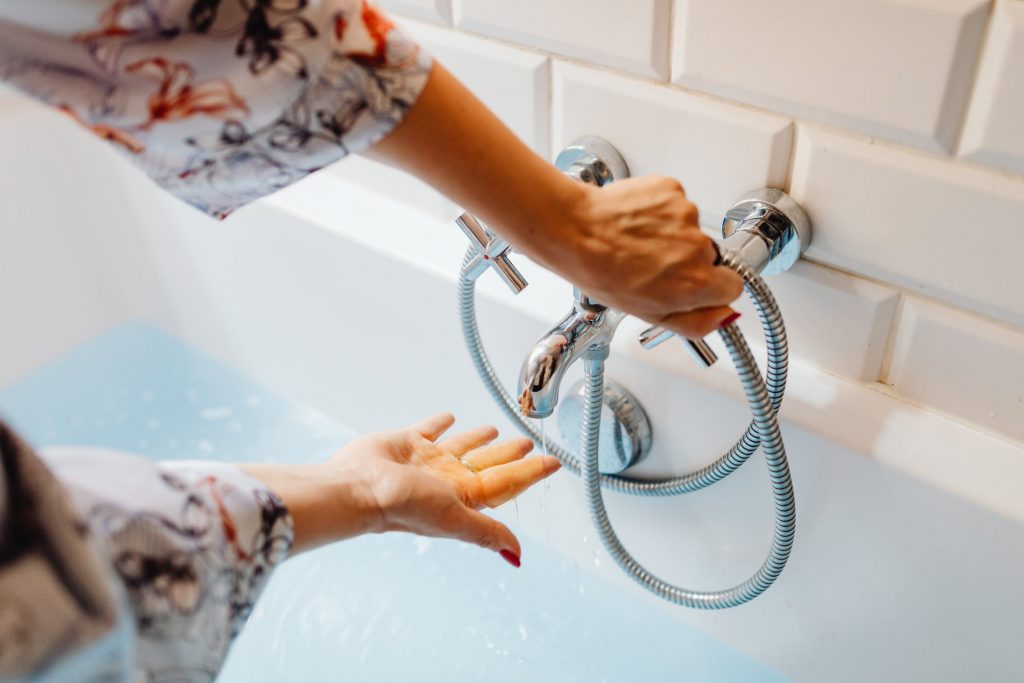
As you know, the temperature of a healthy body is about 98°F (36.6°C), and water above this temperature is considered hot. At 104°F (40°C) — it is blistering, and above 114°F (45.5°C) — it is hard to tolerate after only a few seconds. Hot hydromassage is euphoric at first, but then it can be very stressful for the body. If you sit in a hot tub for a long time, overheating can cause stomach or muscle cramps, nausea, vomiting, headache, dizziness, and weakness. Therefore, it is crucial to control the water temperature, especially considering the hot tub bathing duration.
The general rule is that the hotter the water, the shorter the hydromassage session should be. To get the body used to it, you can start with 10 minutes until you reach the optimal duration, which must be chosen for each case.
What temperature kills bacteria in hot tubs?
Usually, the water temperature in a hot tub is below 104°F (40°C), which is not enough to kill bacteria. For example, Legionella bacteria, which cause pneumonia, are often found in hot tubs because they multiply in warm water. It can be dangerous for older people. A person can become infected with Legionella by inhaling steam or fog from a contaminated hot tub. Therefore, it is crucial to use chemicals to keep the water clean. Previously on our website, we have already taken apart the best hot tub chemicals starter kits.
The best temperature for a hot tub
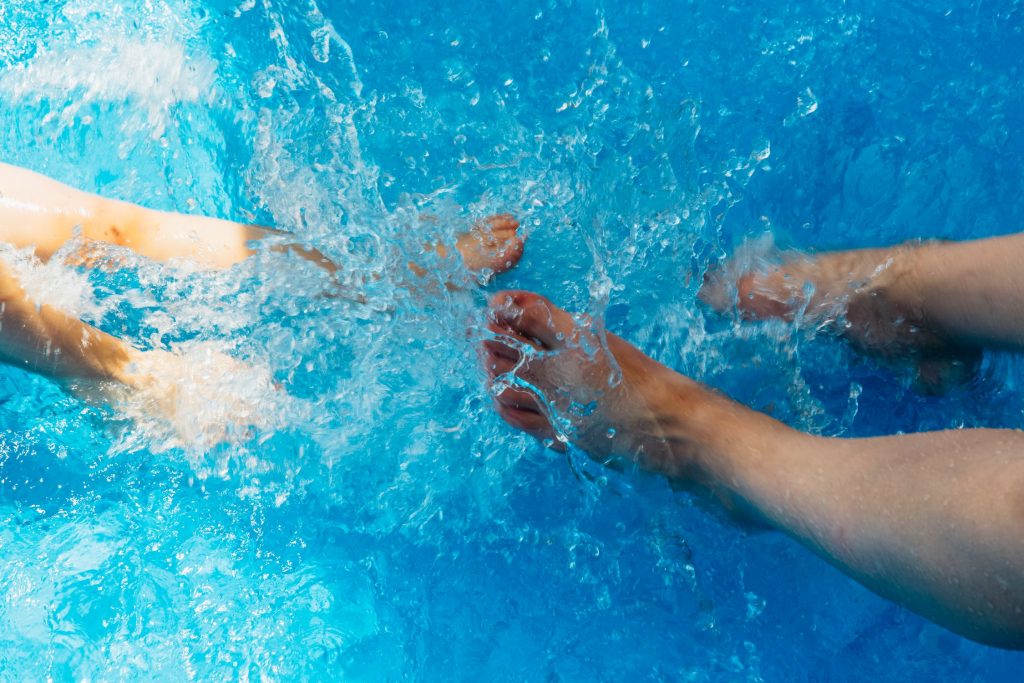
Now let’s figure out what temperature it’s best to set depending on the time of year.
In summer
The hot tub can be taken not only when it’s cooler. If you want to cool down on a hot summer day, set the temperature to 95°F (35°C) or lower, up to 85 °F (29.4°C). Anything below body temperature will feel chill and refreshing.
You can use the economy mode (may be called summer mode or sleep mode) on the hot tub to cool the water. The water will be 15 °F cooler than the set value in this mode.
In winter
Usually, in winter, you want to warm up and relax your body in a warm hot tub. To do this, it is necessary to keep the temperature higher than the body temperature. Most commonly, it is recommended to keep the water between 99 and 104 degrees. You can try different temperatures to find the right one for you.
But do not lower the water temperature below 90 degrees, or it will start to freeze.
To keep permanently
Many people want to save on electricity and turn off a hot tub for this purpose. But this is not the right decision. When you turn off a tub, the temperature drops, and more electricity is used to heat it back up. Plus, it takes a lot of time, and you have to wait several hours. So it’s more economical to maintain the same temperature that is comfortable for you all the time.
If you do not use the hot tub constantly — which is less than two hours a week, you can reduce the temperature by 5°F below your preferred temperature. A couple of hours before you want to take your bath, increase the temperature to the desired temperature. If you reduce the water temperature below 5°F, it will take longer to heat it and, accordingly, take more time.
Summary
The U.S. Consumer Product Safety Commission has determined that temperatures above 104°F (40°C) are dangerous for adults because they can cause hypothermia. In addition, excessive body temperature can cause stomach or muscle cramps, nausea, vomiting, headache, dizziness, and weakness.
Overall, people are most comfortable at temperatures between 100°F (37.5°C) and 102° (39°C). Healthy adults can safely soak at these moderate temperatures for twenty minutes at a time. From age 5, the child can be in a hot tub for 15 minutes at a temperature of 98°F (36.6°C) to 102°F. If the water temperature is 104 degrees, your child should be in it for no more than 5 minutes.Pregnant women should ensure their body temperature does not rise above 102.2ºF (39°C).And for most older people, a safe temperature of 93ºF (34°C) to 100ºF (38°C) is appropriate.
Always maintain a comfortable temperature regime and stick to the right hot tubbing time. In this case, a hot tub will bring you a relaxing and healing effect.
FAQ
🥵Is 110 too hot for a hot tub?
The U.S. Consumer Product Safety Commission (CPSC) warns that the water in the hot tub should be less than 104°F (40°C) to avoid causing hypothermia. Typically, in modern spas, 104 degrees is the maximum temperature that can be set.
⏳How long can you sit in a 100-degree hot tub?
A healthy adult can stay in a hot tub at 100 degrees for 10-15 minutes. A child can also be in such water for up to 15 minutes under supervision.
🔥Are hot tubs actually hot?
The typical temperature for a bathtub ranges from 93°F (34°C) to 100°F (37.7°C). Since the human body temperature is 98.6°F, anything below feels chill, and anything above — feels hot. Therefore, it all depends on what temperature of the water you set.
🤒What happens if you sit in a hot tub too long?
If you sit in a hot tub for a long time, overheating can cause headaches, nausea, and dizziness. In addition, temperatures above 104°F (40°C) are dangerous for adults because they can cause hypothermia.
💵Is it cheaper to keep a hot tub on all the time?
Many people want to save on electricity and turn off a hot tub for this purpose. But this is not the right decision. When you turn off a tub, the temperature drops, and more electricity is used to heat it back up. Plus, it takes a lot of time, and you have to wait several hours. So it’s more economical to maintain the same temperature that is comfortable for you all the time.
🛀How long can you stay in a hot tub at 95 degrees?
A healthy adult can stay at 95 degrees for 20 minutes and no more.
Sources
- U.S. Consumer Product Safety Commission. (1979, December 31). CPSC Warns Of Hot Tub Temperatures. https://www.cpsc.gov/Newsroom/News-Releases/1980/CPSC-Warns-Of-Hot-Tub-Temperatures
- American Academy of Pediatrics. (n.d.). https://www.aap.org/
- MotherToBaby. About OTIS. (n.d.). https://mothertobaby.org/about-otis/
- The American College of Obstetricians and Gynecologists. (n.d.) https://www.acog.org/
